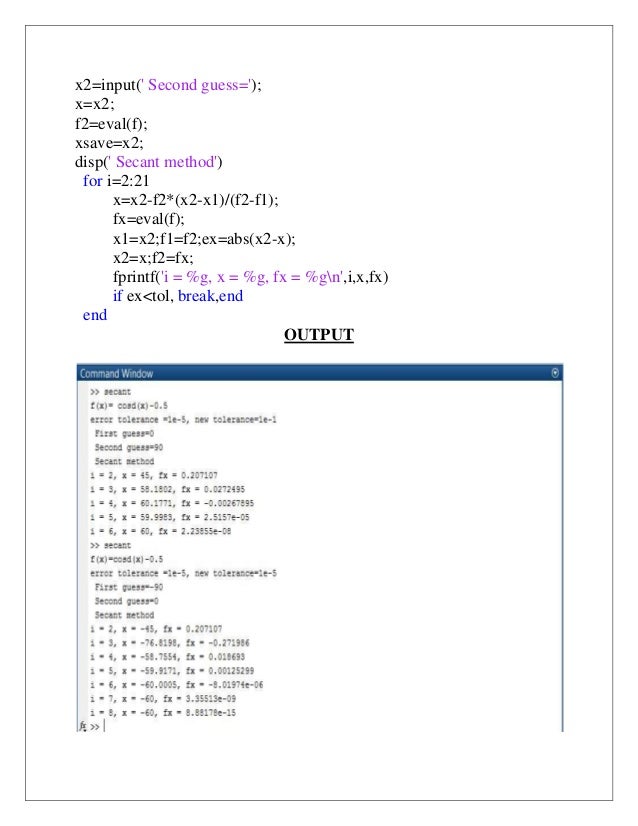Fortran Program For Secant Method

New Fortran: None. Galapago Game Free Download Crack Files more. The Secant Method does not generalize well to multiple equations, but the basic idea of creating numerical derivatives can be carried.

Fortran 77 Programs Fortran 77 Programs Related to the Book Book Title: Author: Publisher: Publication Place: New York Publication Date: September, 1997 ISBN's: 0-521-48143-0 (hardback); 0-521-48592-4 (paperback) List Prices: $110 (hardback); $42.95 (paperback) Other Info: 393 Pages; 7 x 10; 30 Line Diagrams; 5 Tables; 94 Exercises; Bibliography and Index Please Note: • Most programs listed here have appeared in the book (as indicated), which are copyrighted by Cambridge University Press. • No warranties, express or implied, are made for any materials at this site. Introduction •: One-dimensional motion under a harmonic force (appeared in the book). Basic Numerical Methods •: Lagrange interpolation with the Aitken method (appeared in the book).
•: Lagrange interpolation with the upward/downward correction method. •: Orthogonal polynomials generator (appeared in the book). •: Millikan experiment fit (appeared in the book). •: Millikan experiment with a direct linear fit. •: Derivatives with the three-point formulas (appeared in the book). •: Integration with the Simpson rule (appeared in the book). •: Root Search with the bisection method (appeared in the book).
•: Root Search with the Newton method (appeared in the book). •: Root Search with the secant method (appeared in the book). •: Bond length of NaCl (appeared in the book).
•: Classical scattering (appeared in the book). •: Uniform random number generator (appeared in the book). •: Exponential random number generator (appeared in the book). •: Gaussian random number generator (appeared in the book).
•: Two-dimensional percolation (appeared in the book). Ordinary Differential Equations •: Simplest predictor-corrector scheme (appeared in the book). •: Pendulum solved with the fourth order Runge-Kutta algorithm (appeared in the book). •: Boundary-value problem solved with the shooting method (appeared in the book, with minor modifications). •: Simplest algorithm for the Sturm-Liouville equation (appeared in the book). •: The Numerov algorithm from Eqs.